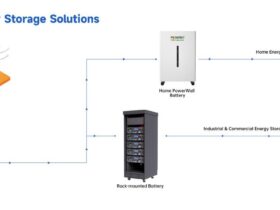Big data is a powerful tool that companies and organizations can use to analyze data. It gives them valuable information about customer behavior, performance metrics, and the demand for their products. But using big data requires a big data engineering project that can turn raw data into information that makes sense. In this article, we’ll look at the idea of “big data projects,” from where it came from to how it’s actually done. We will talk about things like algorithm design and programming that are needed to make a big data engineering project work.
Big Data Projects
It has become increasingly important in the modern world, as businesses and organizations of all sizes strive to stay ahead of the competition by leveraging their data for greater insight. Big Data Engineering and architecture for big data require a lot of planning and knowledge to do well, which makes it very hard to turn ideas into reality. Many companies use the skills of a professional engineer or architect who works with big data to make sure their project is done right and quickly.
There are several steps that can be taken by those who want to tackle a big data project on their own to ensure that everything is done correctly and delivered on time. First, it’s important to figure out what kind of data needs to be collected, analyzed, and stored for the project.
Defining the Concept
It has become a hot topic in the business world, but few people truly understand what it means and how to make it a reality. Those who are interested in getting into it, must have a good grasp of the concept before they can begin to plan and execute projects that involve data collection, storage, manipulation, analysis, and visualization.
The concept of “big data” can be understood as an effort to store large amounts of data from multiple sources and use it for various purposes, such as predictive analytics or creating business value. It involves collecting it from a variety of places, like web logs, social media platforms, and other external sources; storing it on distributed systems; processing it with specialized software, analyzing it with statistical methods, showing the results in a way that makes sense, and using the insights gained to make good decisions.
Implementing the Plan
It can often feel like a daunting task, especially when it comes to implementing the plan. You can build a successful big data project with the correct expertise and know-how.
This post will help readers complete their big data projects. We’ll address stakeholder involvement, industry-standard deadlines and targets, risks, and bottlenecks. With these tips in mind, it should go off without a hitch! Planning is arguably the most important stage of any big data project. Your plan should outline its aims, methods, and timeline. It should explain how your big data initiative will benefit the organization. Include a timetable with milestones and due dates and a project description.
Gathering & Analyzing the Data
It’s an increasingly important part of the modern business world, and it’s becoming more and more necessary to have a successful big data project. Gathering and analyzing it is key to any such project, but it can be challenging. Before figuring out what to do with the huge amount of data available, organizations must decide what data to get and how to get it.
Customer surveys and public records can provide data. Data analysis involves examining the collected information in order to draw conclusions about trend patterns, and correlations between different facts. For this strategy to work, you need to know a lot about how different kinds of data interact with each other and have specific skills for interpreting data.
Refining & Modeling
Refining and modeling data is a key part of any big data project. This lets you see the trends underneath the data. It must gather, clean, and alter data to create meaningful models. Predictive analytics can then bring the idea to life.
Using machine learning and natural language processing to refine and model allows for more in-depth analysis than ever before. By putting together structured data with unstructured sources like text papers and web pages, businesses can find out new things. These correlations can inform pricing and product launch decisions after data cleansing and modeling.
Visualizing Results
Big data projects are becoming increasingly popular in the tech industry. It can benefit organizations with all the new technology and tools. Visualizing findings is the best approach to evaluating big data projects and understanding analytics.
Visualizing results helps you measure progress on any project, big or small. This article shows how visualizing results can help your project succeed by taking you from concept to reality. We will explain how visualizing it brings clarity and insight and share techniques for visualizing your own outcomes.
Conclusion
Big data projects demand thoughtful preparation. Because of this, the way to getting good results can be long, winding, and hard. In this paper, we looked at the process from coming up with an idea to carrying it out on a scalable architecture.
To succeed, It must consider certain factors. Understanding technology, science, and skills for success is extremely vital. Planning and testing are necessary to assure product quality.










Leave a Review